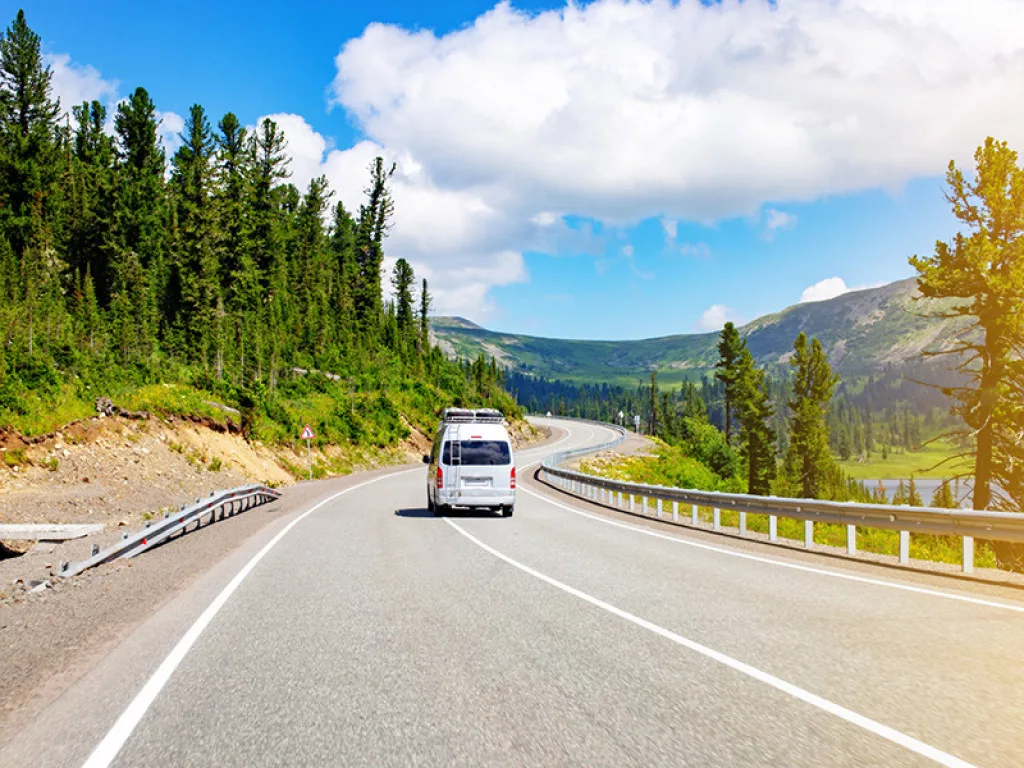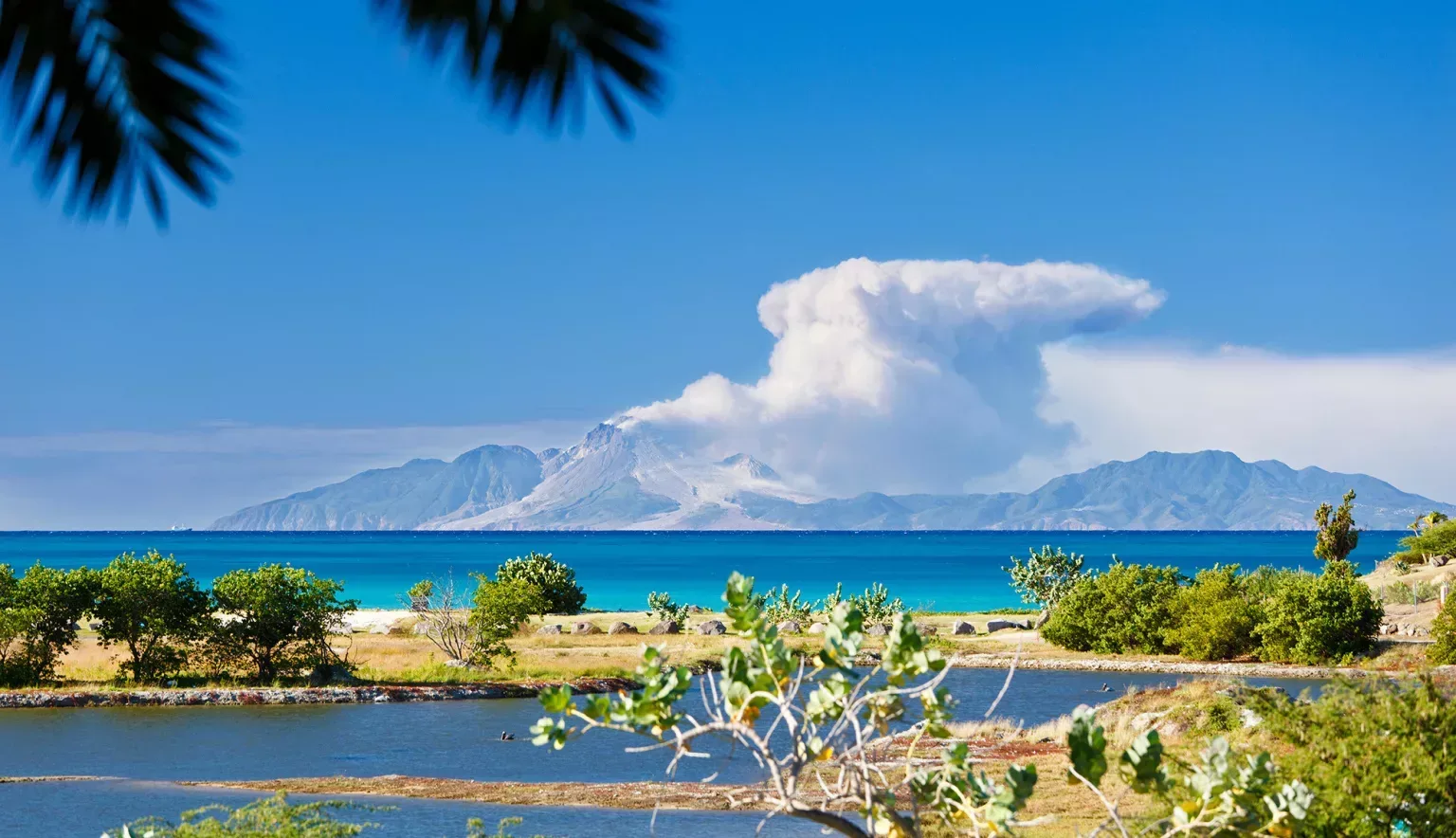Summon your fiery spirit of adventure with a trip to the volcanic island of Montserrat, a place of history, culture and awe!
MONTSERRAT
On the western fringe of the Atlantic Ocean, a chain of islands rises from the water like a formation of stepping stones, the remnant breadcrumbs of a prehistoric continental shift, linking the South American mainland to Haiti and Cuba, bound northwest towards the Gulf of Mexico.
Located close to the equator, Montserrat is one of the many isles boasting tropical weather and abundant rainforest wilderness, where clear cyan shallow coasts reach out and blend into the rich blue water, classically aesthetic characteristics of the region.
Montserrat is fittingly fruitful in its offerings; a stretch of around 40 kilometres of coastline surrounds the pear-shaped island, and at roughly 16 kilometres long by 11 kilometres wide, adventure is never far away.
But the island has also had a dramatic recent history. A terrible disaster in 1995 caused by the volcanic Soufrière Hills saw the destruction of lives, the island’s capital of Plymouth, as well as the ruination of over half of Montserrat’s landmass. This fuming monolith of the island has been active ever since, although activities remain quite low. Despite this, after years of rebuilding its tourism industry, Montserrat has turned a tragic event into a memory and place of visitation. Travellers can view the looming Soufrière Hills volcano from a safe distance, as well as Plymouth, which has remained the capital of the island despite the disaster – a city buried in ash.
Montserrat is indeed regarded as a gem of discovery and one of the safest Caribbean islands to visit. Known as the “Emerald Isle” of the Caribbean, Montserrat is a British Overseas Territory and part of the Leeward Islands (Lesser Antilles), and celebrates a unique Afro-Irish heritage that is embodied by its people, food, drink and annual festivities. Beyond this rich culture, a multitude of leisure and outdoor activities await travellers across the island’s land and coasts.
TOURISM INSIGHTS: MONTSERRAT TOURISM DIVISION (MTD)
At the heart of the island’s tourism sector, Montserrat Tourism Division (MTD) is customer-driven, people-centric, conservation-focused and tech-enabled, led by a vision to provide the perfect environmentally friendly travel experience for its visitors.
Q&A WITH ROSETTA WEST-GERALD, DIRECTOR OF TOURISM, MTD
Can you talk us through the origins of MTD, its initial vision and its goals?
Rosetta West-Gerald, Director of Tourism (RWG): At the heart of it all, MTD focuses on sustainable tourism. Our tourism strategy identifies the vision as sustainable development through quality tourism which is built on four key pillars: customer-driven, environment conservation, technology adoption, and people-centric.
These pillars are built on a foundation of quality, and the environment is at the core of our planning with an emphasis on protection and conservation.
MTD’s focus equally revolves around providing unique experiences for our visitors, which ultimately leads to increased visitor spending. We look at quality versus quantity and this is depicted even with the types of cruise vessels that we target which are small- to medium-sized.
How do you market Montserrat as a destination?
RWG: Montserrat is a tiny island located just 27 miles southwest of Antigua in the Caribbean, and not to be confused with Montserrat in Spain. We are a British Overseas Territory but with a unique Afro-Irish heritage. Many people know Montserrat for the Soufrière Hills volcano which roared back to life in 1995 and destroyed much of the island’s infrastructure including Plymouth, the airport and nine of our villages. However, Montserrat is more than this.
We are a vibrant, beautiful island with majestic mountains, lush landscapes, healthy marine life, friendly people, and are considered one of the safest destinations in the world. The island offers soft adventure activities including more than eight world-class hiking trails, bird watching, beautiful dive sites, snorkelling, kayaking, boating, turtle watching, and of course volcano viewing, the latter with a focus on the buried city of Plymouth now coined the ‘Modern Day Pompeii’.
In addition to this, we offer two main festivals, the Montserrat Carnival during Christmas which is celebrated from the middle of December to 1st January. We also celebrate our unique St. Patrick’s Festival, with 17th March a public holiday just as in Ireland; we are the only other place in the world where St. Patrick’s Day is a public holiday. This is the day when the island’s Afro-Irish heritage comes to the fore in the way we dress, the foods we eat and the different activities which take place on this day. We also promote other events that happen throughout the year, such as our Calabash Festival in the middle of July and our Literary Festival in the middle of November. All of our activities are promoted on our website – www.visitmontserrat.com – as well as on Facebook, Instagram, Twitter and YouTube.
“Montserrat is unlike any other destination – it is small enough, and unique enough to provide a truly memorable experience”
Rosetta West-Gerald, Director of Tourism, Montserrat Tourism Division
Why, in your opinion, should someone visit Montserrat?
RWG: Montserrat is unlike any other destination; it is small and unique enough to provide a truly memorable experience. Upon arrival on the island, the clean air and picturesque landscape will captivate even the hard-to-please traveller. There is plenty of accommodation to choose from to suit all tastes and budgets, almost all with stunning views of the mountains and the sea. Getting around the island is also quite easy, via regular bus services, taxis or car hire. Cuisine is infused with a sweet island flare and can be purchased from snackettes, takeaways and full-service restaurants.
On top of the various activities that people can engage in on the island, a great reason to visit Montserrat is the fact that many people arrive as visitors but leave as family. The island truly grows on people which causes them to return year after year.
What are some of the country’s most unique landmarks?
RWG: The most unique landmarks in Montserrat are:
- The Buried City of Plymouth – ‘Modern Day Pompeii’.
- Runaway Ghaut – the legendary fount which provides cool natural spring water. It is fabled that if anyone drinks the water from the fount they will be destined to return to Montserrat.
- Rendezvous Beach – the only white sand beach on the island which is only accessible via a hike or water taxi.
- Jack Boy Hill – an oasis for picnics and views of the volcano and the W.H. Bramble Ruins which resulted from the volcanic eruptions.
- Garibaldi Hill – provides 360° views of the island including the volcano and the buried city of Plymouth.
- Montserrat National Trust Gardens – offers a scenic and serene garden tour experience. Also learn about the island’s history.
- Hill Top Coffee House – mini museum showcasing the late Arrow (Soca superstar) and Beatles memorabilia.
- Centre Hills – a natural reserve which contains a variety of unique flora and fauna including the national bird – oriole – and the national flower, the Heliconia. This is also the location for a diverse network of hiking trails.
- Petroglyph – the hiking trail which leads to unearthed petroglyphs, prehistoric markings on a rock which are believed to be made by Amerindians.
- Bat Cave – one of the most popular dive sites in Montserrat which offers a unique experience to view hundreds of fruit bats in their native environment.
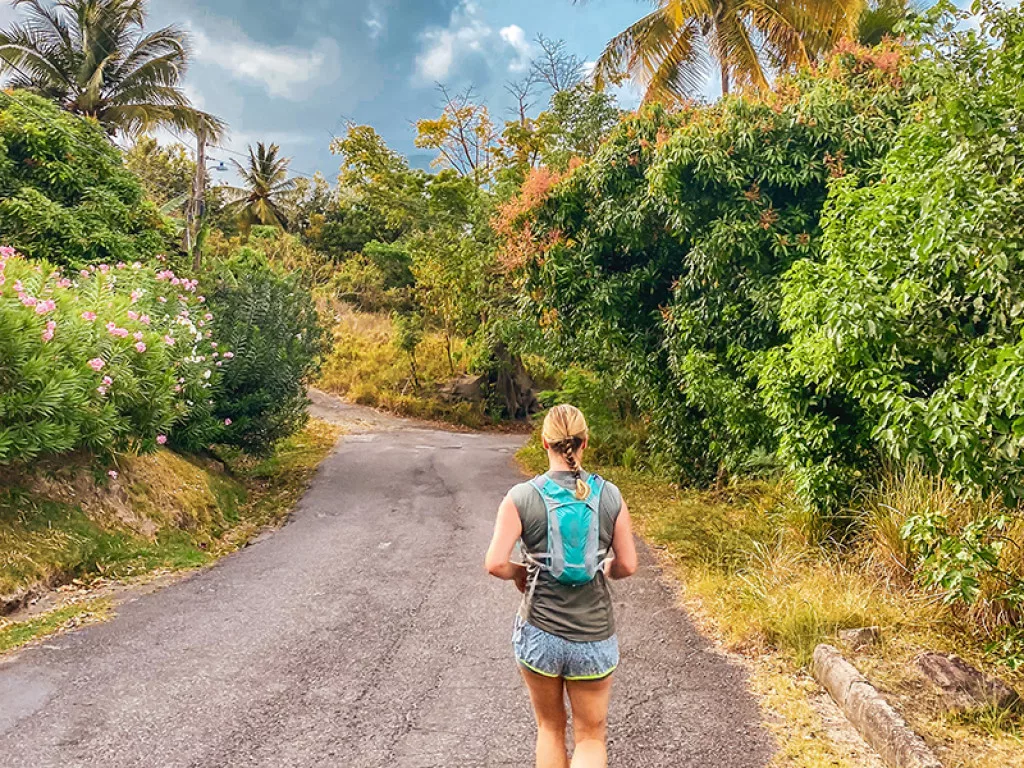
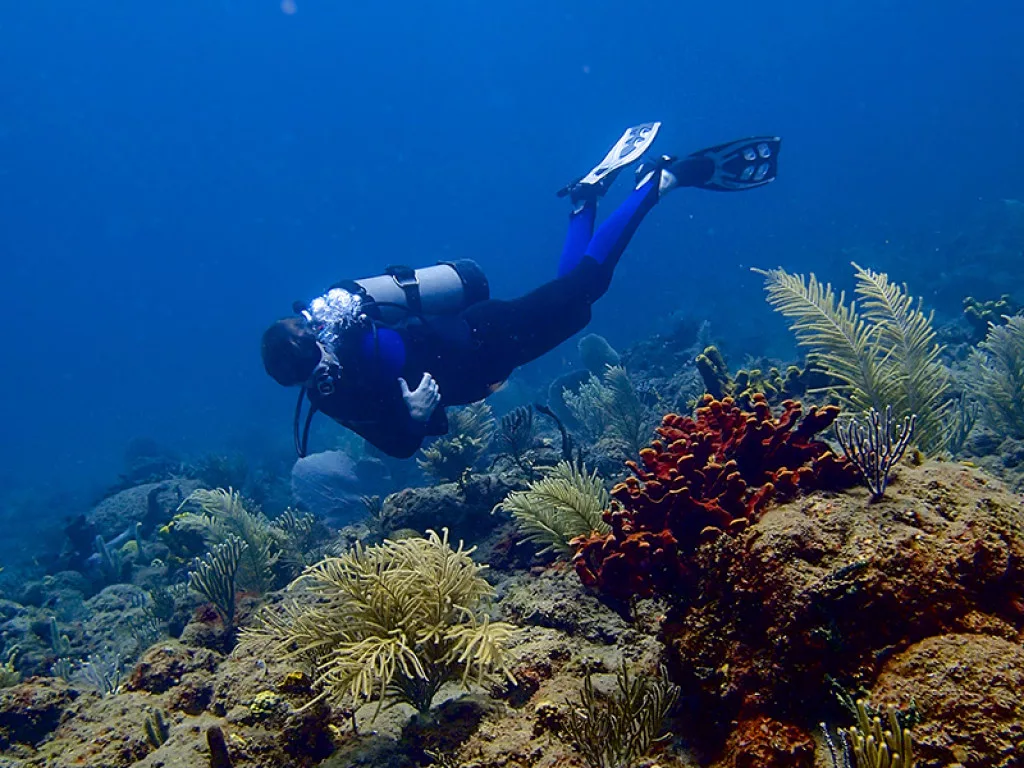
What challenges does the tourist industry in Montserrat face, and how do you promote off-season travel?
RWG: The challenges that the tourism industry faces are three-fold: natural, manmade and resource based.
Like many other destinations in the region, storms are always an issue to take into consideration, as we are located in the Caribbean as well as the hurricane belt. Should COVID-19 spikes resurface, this will also cause problems, on top of current issues such as increased fuel prices and access challenges. Montserrat is serviced by islander planes, whilst the ferry and twin otter services are welcome seasonal additions, especially for people who visit in December and March when visitor numbers increase for the festivals. These services also encourage day visits to the island.
As for off-season travel, we offer a few activities to attract visitors during this time. For example, the off-season is generally from the middle of April to the middle of November. In July, we organise a Calabash Festival which is aimed at attracting vacationers who are looking for something different to do during this period. The Calabash Festival really celebrates the iconic Calabash fruit, and not only highlights the ways in which the fruit can be used – jewellery, utensils and art, for example – but also showcases other aspects of our heritage including our music, food, and pageantry. In November, we also promote a Literary Festival termed the Alliouagana Festival of the Word, Alliouagana being the Amerindian name for Montserrat. This event highlights everything from a book parade and poetry to author book signings.

“We are a vibrant, beautiful island with majestic mountains, lush landscapes, healthy marine life, friendly people and is considered one of the safest destinations in the world”
Rosetta West-Gerald, Director of Tourism, Montserrat Tourism Division
What trends are transforming the tourism industry in Montserrat and how are you utilising them?
RWG: One of the trends transforming the tourism industry is the inclusion of immersive or experiential holidays. MTD has been working on getting locals prepared to offer additional experiential services; for example, community-based tourism including farm-to-table and walking tours. There are so many interesting stories to tell, and getting tourism stakeholders to be able to do so is important to us.
Other trends include more wellness holidays; there are a few operators offering massage and spa treatments and yoga therapy, and these are all geared at rejuvenating the mind, body and soul. Some have been adding new products and services including saunas and various types of massages.
Eco-travel holidays are another aspect to consider. Montserrat by its very nature is concerned with eco-travel as we offer a number of soft adventure outdoor activities which have a low impact on the environment such as hiking, turtle watching, kayaking, and walking tours, so protecting and preserving the environment is a key responsibility of ours.
Then there is the realm of technology. MTD has added an artificial intelligence (AI) chatbot which we fondly call Oriole, in honour of our iconic national bird, to the website, as well as on our Facebook and Instagram pages. This is aimed at improving the user experience by providing 24-hour assistance to guests who are able to access information on a range of services such as flights, accommodation, food, tours and much more. Additionally, the recently added fibre network has helped us to promote remote working, which has boomed globally since it was implemented in January 2021.
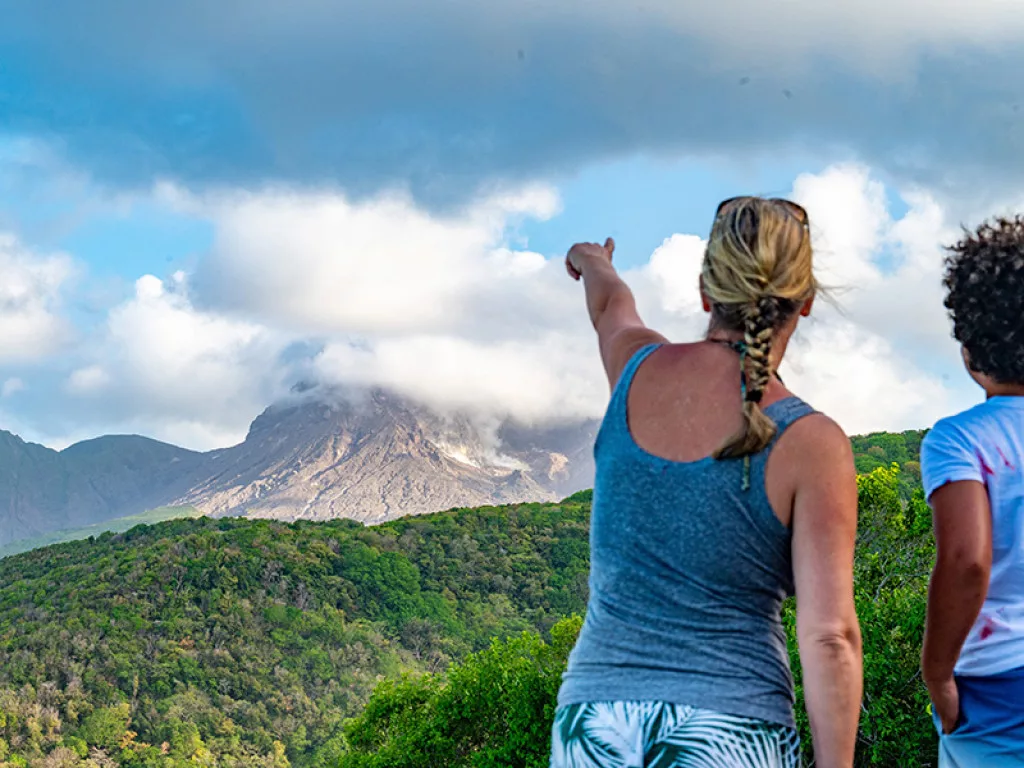
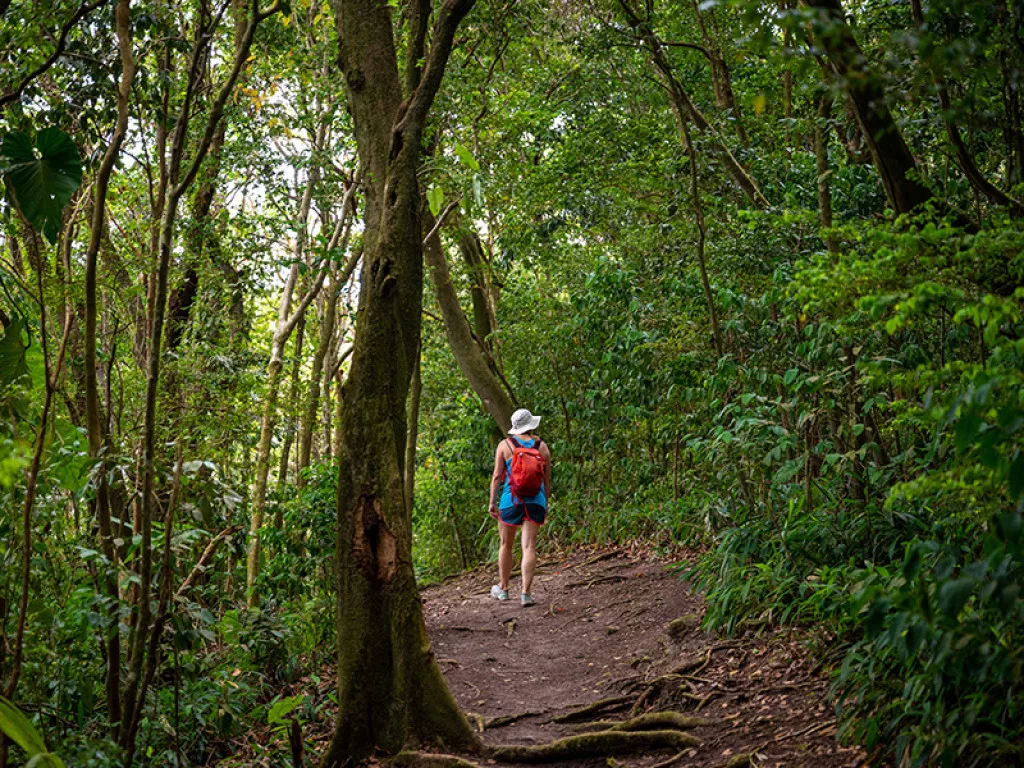
Are you optimistic about the future of the tourism industry in Montserrat?
RWG: Yes, I am optimistic about the future of tourism in Montserrat. The tourism trends point to much of what we are offering at the moment, and should this continue, I see the industry growing in a controlled way.
There are also a number of exciting projects we are currently working on for visitors to our island. One of the main ones is the building of the Volcano Interpretation Centre (VIC) which will showcase the legacy of the volcanic eruptions and the stories of the people of Montserrat who witnessed them. These will be depicted through a number of interactive displays throughout the VIC. We are currently at the design phase of this project, and this is one example of very promising days ahead.
Additionally, the island is working on building a breakwater aimed at improving the access of vessels to the island when the seas are rough in addition to protecting the shoreline.
OUTLOOK RECOMMENDS
Eat:
A national stew with Irish inspiration, try goat water with cassava bread or rice.
Sleep:
For a panoramic view of the hills and sea, stay at Tropical Mansion Suites.
Do:
Take a unique airborne volcano tour with CalvinAir Helicopters.
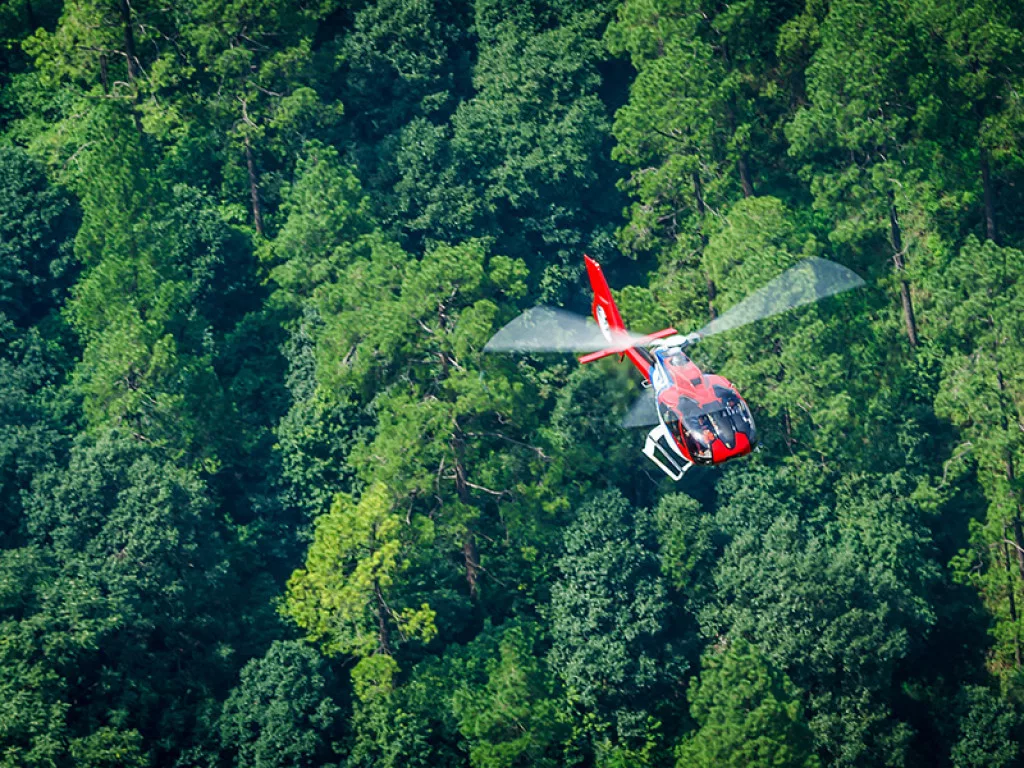
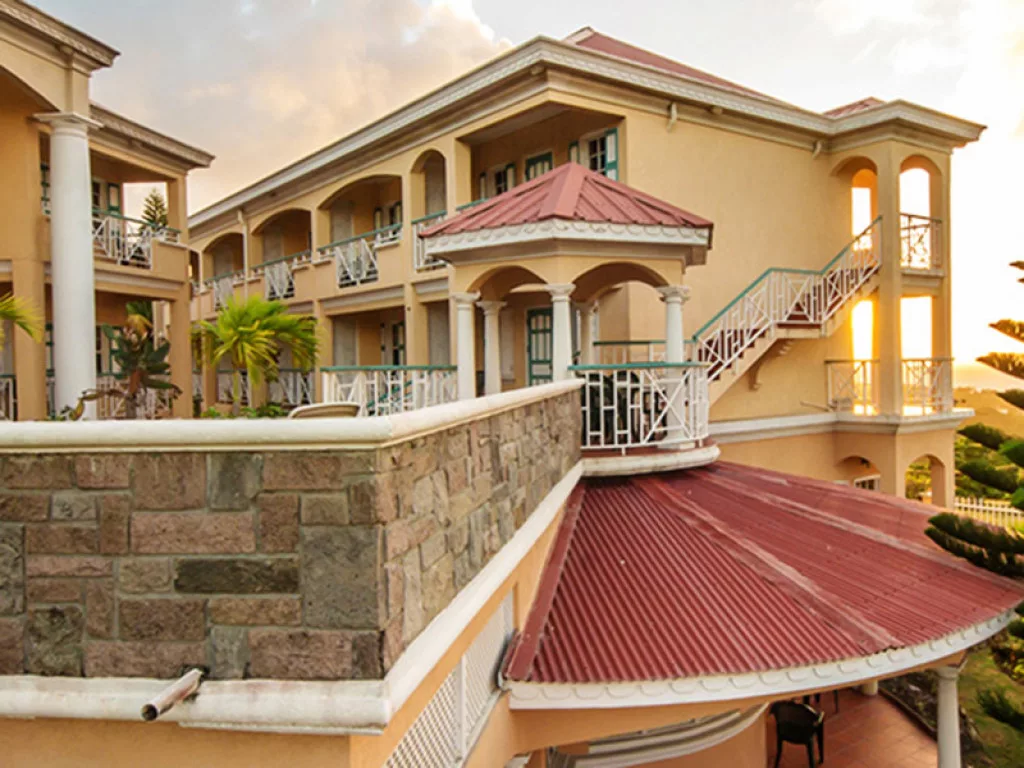
SOUFRIÈRE HILLS IN FOCUS
Soufrière Hills is a peak attraction in Montserrat, and there are several places from which to view it: Garibaldi Hill and Jack Boy Hill provide visitors with dramatic and stunning views of the volcanic rise, as well as the island’s buried capital of Plymouth, Richmond Hill, Old Towne, Salem, Old Road Bay, and Isle’s Bay Hill.
The Montserrat Volcano Observatory (MVO), a research facility and scientific monitoring station, was established in response to the ongoing volcanic eruption that started in 1995, and on top of viewing Soufrière Hills, visitors can learn more about the eruption and disaster. Operated by a team of experienced scientists and technicians who continually monitor the volcano, tourists can discover how these experts use seismology, ground deformation and gas emissions in their work, and visit educational kiosks and the souvenir shop along the way.
The star attraction of the Soufrière Hills region is of course Plymouth, the ‘Modern Day Pompeii’, from which buildings and remnants of the town rise in a bleak yet awe-inspiring image of a town frozen in time. Plymouth remains the only volcanic-buried town in the Americas, and visitors may experience a ghostly calm in the lack of wildlife that was disturbed by the initial eruption and has not yet returned. Proof of human life can be seen all across the once-busy urban centre; in homes, personal items and clothing are two examples of what remain, and in offices, papers and stationery sit like degraded relics of a bygone time. Located in Montserrat’s Exclusion Zone (Zone V), experiencing Plymouth is only available via certified Tours & Taxi Association, and is well worth a visit between cultural festivities, hill trekking and water-based leisure activities on the northern side of the island.
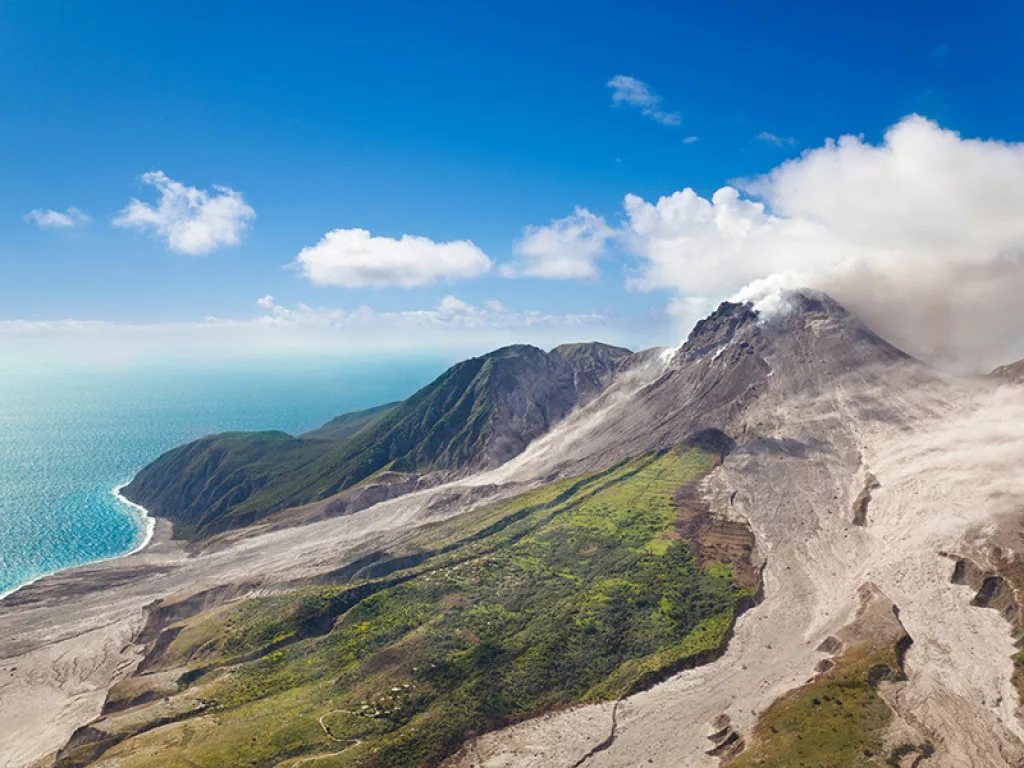
LANDMARK ATTRACTIONS
Rendezvous Beach
Truly magical memories are to be made on Montserrat’s only white sandy beach. Reach the beach by boat, kayak, or a 30- to 50-minute hike, and experience the guaranteed peace and tranquillity with a picnic basket full to the brim with local foods and snacks.
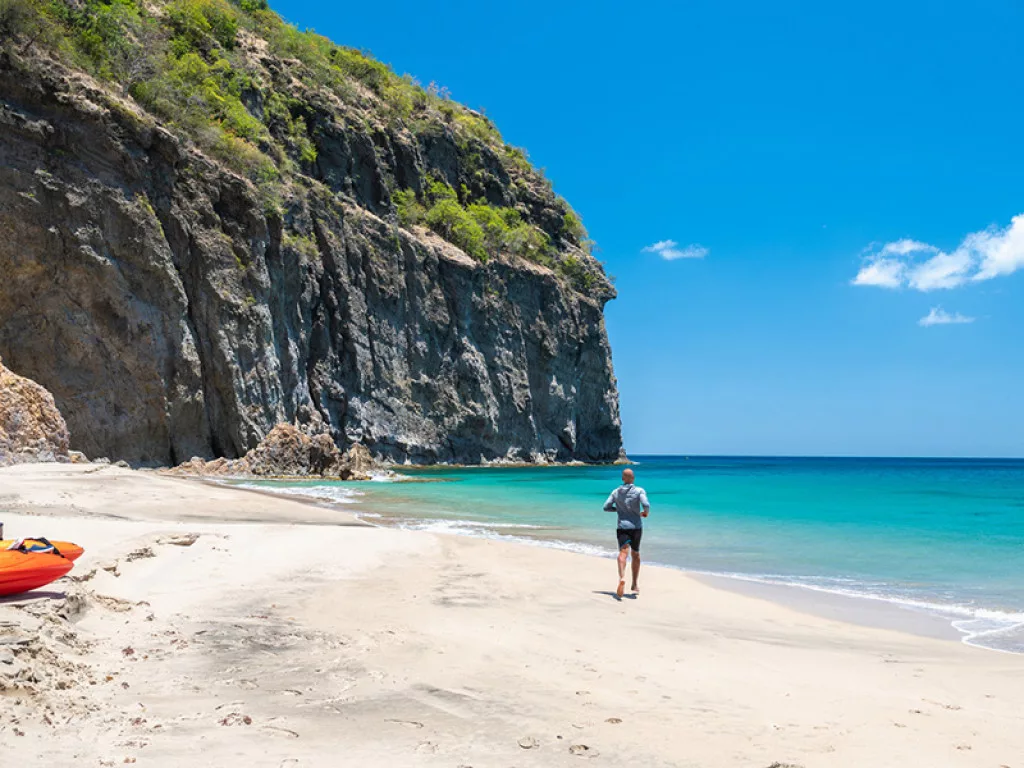
Bat Cave
The Antillean fruit-eating bats are mammals native to Montserrat, and thousands can be seen between the two caverns that make up the Bat Cave. Via a tour guide from Rendezvous Beach, visitors can lay eyes on the pair of colonies, one made up of the females and young, the other males – an experience for the keen explorer.
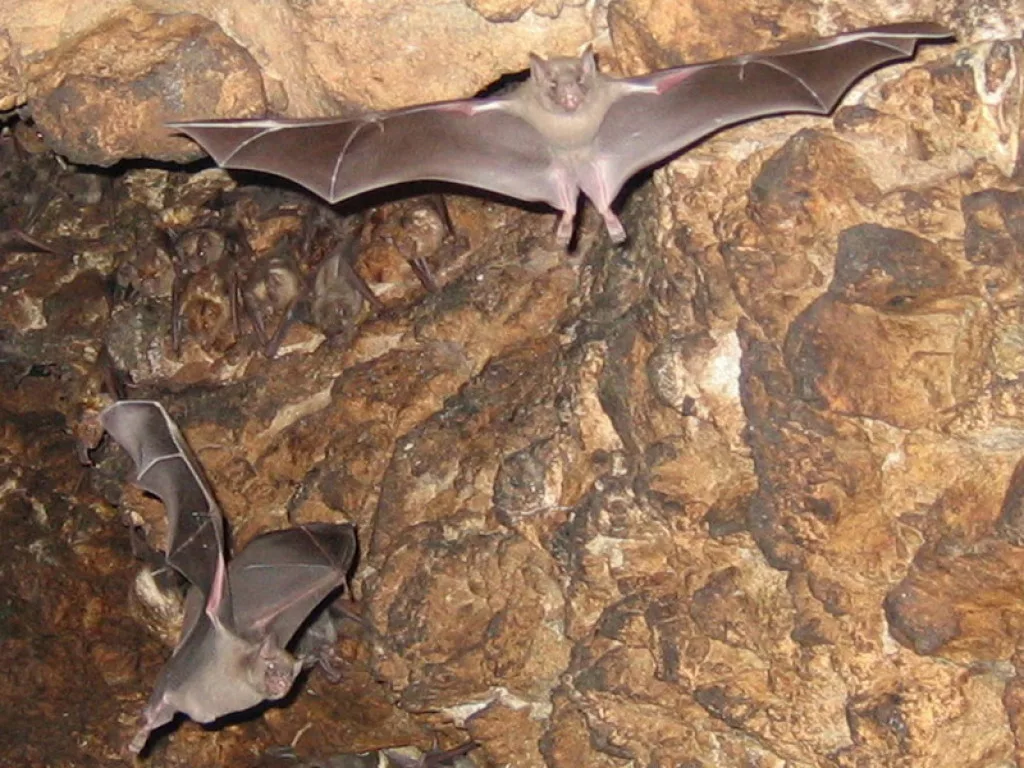
Hike to the petroglyphs
In 2016, hikers on the Soldier Ghaut Trail made a tremendous discovery: the ancient beauty of petroglyphs, thought to be made by the first known people of Montserrat, the Amerindians, marked on rocks. These markings are estimated to be between 1,000 and 1,500 years old and can be witnessed by any visitor willing to make the journey!
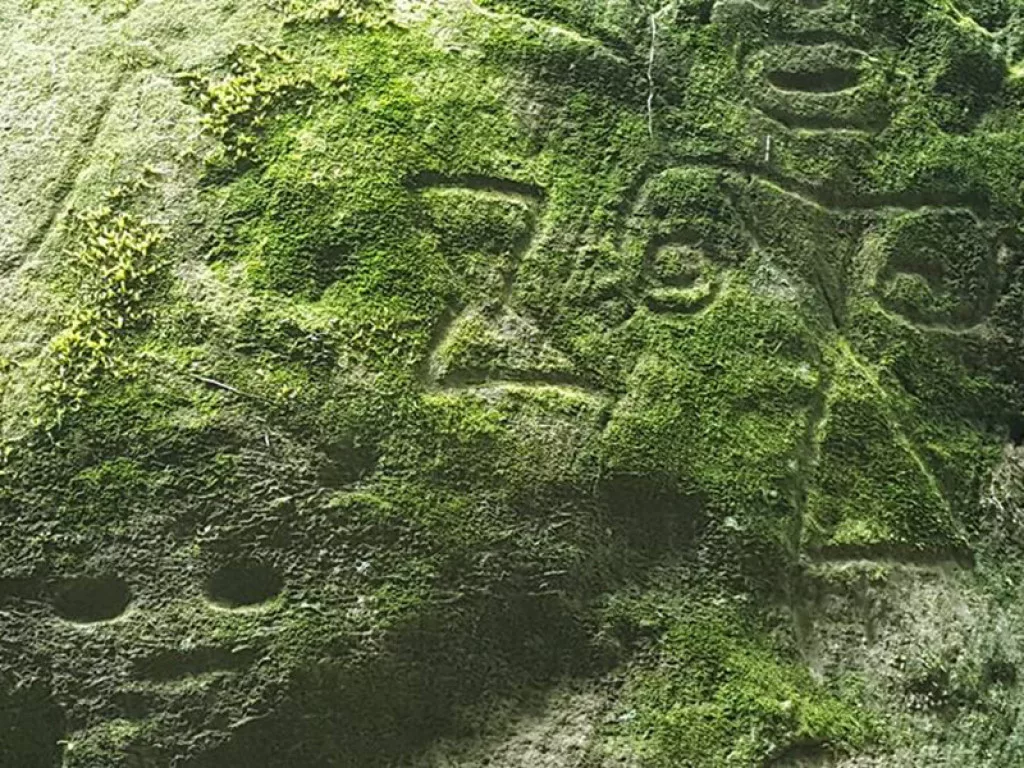
GETTING THERE AND AROUND
Fittingly for a tropical island sat within the North Atlantic Ocean, Montserrat is not reachable directly, but instead by short-haul flight (or seasonal ferry crossing) from its larger neighbour Antigua. Flights to Antigua & Barbuda (ANU) are available from many major international airports, arriving at V.C. Bird International Airport, where a 20-minute flight places you at the John A. Osborne Airport in Montserrat.
Once on the Emerald Isle, adventure is at your fingertips; the whole of Montserrat is connected by a single main road where hailing a bus (or brightly coloured minivans) is common practice – no waiting at stops on your holiday. This is by far the most economical option for the average tourist, as bus/minivan rates start at EC$3 (US$1.25), with additional costs incurred if choosing to go off-route. Just in case visitors are confused as to which vehicle is public transport, each of their number plates begins with an H – think H for ‘hail’!
Taxi hire is another option available at the island’s Little Bay Ferry Terminal or John A.
Osborne Airport, with accommodation providers able to pre-book taxis at your request. If you wish to take things into your own hands there are two options: a range of rental cars is available on the island, the only requirement being a permit from any of Montserrat’s police stations or the airport – you only need a driver’s licence from your home country. For the off-road adventurer, ATV tours and Chez Mango jeep tours provide an exhilarating way to visit the various places the island has to offer.
